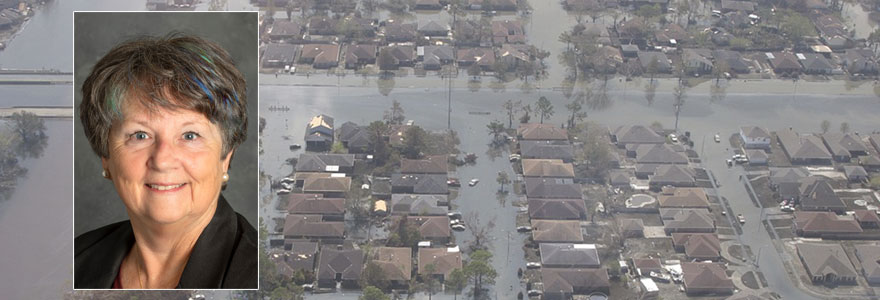News and Updates
Contact
Faculty of Social Science
Social Science Centre
Room 9438
Western University
T. 519-661-2053
F. 519-661-3868
E. social-science@uwo.ca
Considering the Social Construction of Risks and Hazards
November 04, 2019
Story by Rob Rombouts
Not acts of God, but acts of people; not natural disasters, but disasters as they involve intersections of natural systems and human systems. That is how Susan Cutter suggests society should view floods, forest fires and other natural events that destroys homes and buildings, and displace people.
Susan Cutter will explore this argument in the 2019 Department of Geography Distinguished Lecture, “Social Construction of Risks and Hazards”, to be delivered on November 14th.
Cutter is a Carolina Distinguished Professor of Geography at the University of South Carolina where she directs the Hazards and Vulnerability Research Institute.
“There is no such thing as a natural disaster,” said Cutter. “People choose to live in highly hazardous areas, so when a flood comes, which can be a natural event, or could be an event caused by some failure in infrastructure humans built, it then affects the people who choose to live there. If people didn’t live there and the flood didn’t affect them or their property, it wouldn’t be called a disaster, would it?”
Society is increasing exposure to risks and hazards, both through moving into risk prone areas, such as floodplains or forested areas, and through processes that society influences, such as climate change. Attempted solutions to the problems can lead to more dire issues, such as when people develop flood plains and build levees. The levees fix a river in situ, which can cause higher water levels, and more drastic damage if the water does go over the levee. The failure of one levee can create a domino effect, causing the failure of other levees.
Despite this risk, institutions will often accept human-made solutions and ignore the risk. Cutter points to the fact that people in the U.S. who live behind a levee do not need to have flood insurance, even if they live in a floodplain.
This increases the impact on individuals, and the cost for governments.
“The cost of disaster relief, particularly in the US, have skyrocketed. This is partly related to people making bad locational decisions on the individual level, and partly on the governmental level,” said Cutter. “The US does not strictly mandate land-use, so you will have people who want to live right on the shore or the beach, and build million-dollar homes. When they are struck by a storm surge, they lose their investment. Then the community allows them to come back and build homes back bigger and better.”
For planning purposes, Cutter said it is necessary to think about how we manage these types of events, and how we consider their likelihood.
“We have to always anticipate the worst, and think about what is possible, not just what is probable,” said Cutter. “We would never have imagined Hurricane Katrina, or a major conflagration in the Western US that is happening now. We have to think about how we anticipate these sorts of things in the future.”
The increased risks of hazards have already led to climate migrants in Alaska and other areas where their islands and livelihoods are no longer sustainable. Cutter believes this pattern will increase in the future. She said society needs to rethink not only how we respond to these events, but also how we can reduce our vulnerability and our capacity to be more resilient.
“We are part of the problem, in the way in which we think about events, the way we in which our historic patterns of settlement and economic and political processes have not only influenced the built environment, but also we have altered the natural systems,” said Cutter.
The 2019 Department of Geography Distinguished Lecture will be on Thursday, November 14th, at 2:30 pm in Conron Hall, University College.

